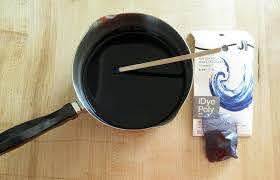My work involves working with customers and their application specific needs and trying to determine which materials on the 2500Plus Multi-jet printer are best for specific use cases. Many once-valid opinions about additive materials are now myths.
The MJP 2500Plus now expands to 10 materials: five rigid class, two engineering grade, two elastomeric and one specialty for high temps. VisiJet® M2 MultiJet Printing materials are for functional precision plastic and elastomeric parts. The rigid materials offer watertightness for evaluation of fluid flow performance. Following are highlights and use cases for some of the materials:
VisiJet Armor is a tough, ABS-like impact resistant material.
- Impact-resistant
- ABS-like for snaps & drilling, jigs and fixtures, patterns and molds
- World-class clear finish
VisiJet Rigid Grey
- Primer Gray finish = exceptional feature detail viewing
- Simple visual modeling applications
- Medical Applications
VisiJet ProFlex
- Durable, Polypropylene-like, High Impact Material
- Capable of creating living hinge parts with multiple full actuations
- Exceptional clarity
- Ideal for applications requiring deformable plastic
VisiJet Rigid M2R-CL and WT; VisiJet CR-CL and WT materials are bio-compatible
USP Class VI - Rigid materials for the ProJet MJP 2500 and 5600 have passed USP Class VI biocompatibility certification.
- Short term contact with human skin (30 days)
- Mucosal-membrane (24 hrs)
ISO 10993 - Rigid materials for the ProJet MJP 2500 have passed the following testing criteria:
- ISO 10993-5 - Cytotoxicity
- ISO 10993-10 Sensitization Maximization Irritation
- ISO 10993-10 Intracutaneous Reactivity
VisiJet M2S-HT90
- Heat resistance with high heat deflection temperature at 90°C
- Excellent humidity/moisture resistance
- Rigid and transparent
- Biocompatible
- Molds and dies for rapid tooling applications
-Under-the-hood components
-Heated fluids and gasses flow analysis
-Electronics enclosures/cases
- Medical applications
For a quick look, 3D Systems also created an eBook that provides an overview of the 2500Plus materials portfolio. In addition to features and material properties, the eBook (http://info.mastergraphics.com/3d-systems-rapid-prototyping-ebook) provides guidance on how to assess additive materials, and what you should be looking for.
Download the eBook to learn:
- When to prototype, why and how to achieve faster time to market
- How to reduce development cycles, lead-time and engineering effort
- Prototyping for agile manufacturing, and key questions to ask before getting started
- How to use CAD data for design verification and types of prototyping
- 3D printing technologies for rapid prototyping and choosing the best solution






